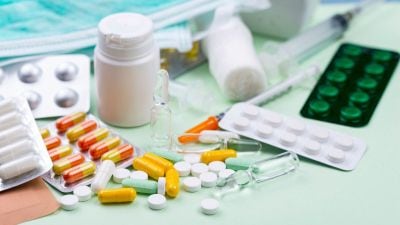Ironing out weakness
Three out of four young children have it, every second woman has it, three-fourths of all pregnant women and nursing mothers have it, and al...

Three out of four young children have it, every second woman has it, three-fourths of all pregnant women and nursing mothers have it, and almost all girls in their teens have it. Poor or rich, urban or rural, old or young — all are affected. Yet there is little awareness of this silent danger.
Anaemia — the most chronic malady of mankind — continues to affect more than half of India’s population irrespective of sex, age, social status and location. At least 70 million children below 6 years and 13 million pregnant women in India are anaemic. Prevalence among working adults (18-45 years) is also predicted to be pretty high.
Iron is required for the formation of haemoglobin — a protein in red blood cells that carries life-sustaining oxygen to all parts of the body. Inadequate iron intake retards formation of this haemoglobin, thereby lowering the oxygen-carrying capacity of blood.
Anaemia occurs particularly when iron needs are high, as in pregnancy and phases of rapid growth such as infancy, early childhood and adolescence. Worms and malaria also aggravate anaemia. During adolescence, false concerns about body figure, food fads, ignorance and high intake of junk food leads to iron deficiency. Contrary to popular belief, adolescent boys (16-17 years) are also anaemic. Studies indicate that their diets contain less than half the amount of iron required.
Anaemia develops gradually. This is worrying, since the condition usually goes unnoticed till haemoglobin drops to as low as 3-4 gm%. The normal levels are 13 gm% for men; 12 gm% for women, 11 gm % for pregnant women and 11-12 gm% for children.
Pregnant women with anaemia are three times more likely to deliver before term and/ or give birth to low birth weight babies. Such infants have a nine times greater risk of dying within the first month. Severe anaemia during pregnancy (less than 7 gm%) can also cause death of the mother and irreversible mental defects in the infant. In fact, 40 per cent of all maternal deaths are linked to anaemia. This means that 75,000 families without a mother are being added to our country every year!
Anaemic infants have impaired mental development, language skills, body balance and coordination. At school, anaemic children show poor attention span, memory, concentration, and concept acquisition leading to poor performance. In older children and adults, symptoms are very general and are often missed. They include tiredness, lack of concentration and interest, and breathlessness on mild exertion. Paleness of skin, eyes, tongue and nail beds are other symptoms. Even in mild anaemia, a definite increase in sense of well-being and better exercise tolerance is observed after treatment. Anaemia also makes us more vulnerable to infections.
Consuming adequate iron through our food can easily control anaemia. While iron is found in many foods, only a small proportion is actually absorbed by our body. Green leafy vegetables, grains, dates and jaggery are particularly rich sources. However, they also contain phytates, oxalates, phosphates and fibre, which inhibit absorption. In vegetarian diets, only 2-5 per cent of the iron consumed is actually absorbed. In contrast, animal flesh foods — particularly meat and liver — are rich sources of iron from which as much as 20-30 per cent iron is absorbed.
Including Vitamin C-rich foods (orange, lemon, guava, amla, green mango and fermented/ sprouted foods) in meals increases iron absorption. Also, tea and coffee inhibit iron absorption; avoid drinking them for at least half-an-hour before or after meals.
Research has documented the benefits of taking iron supplements on a regular basis, particularly for pregnant women, nursing mothers, adolescent girls, and 6-24 months old children. Even adult women can benefit greatly by consuming an iron pill regularly.
Another tried and tested method is adding iron to foods consumed by the masses. In India, a few foods such as atta, bread and infant formulas are already being fortified with iron. Research on fortifying salt with iron along with iodine is currently in progress.
The writer is a nutrition and health researcher






- 01
- 02
- 03
- 04
- 05

























